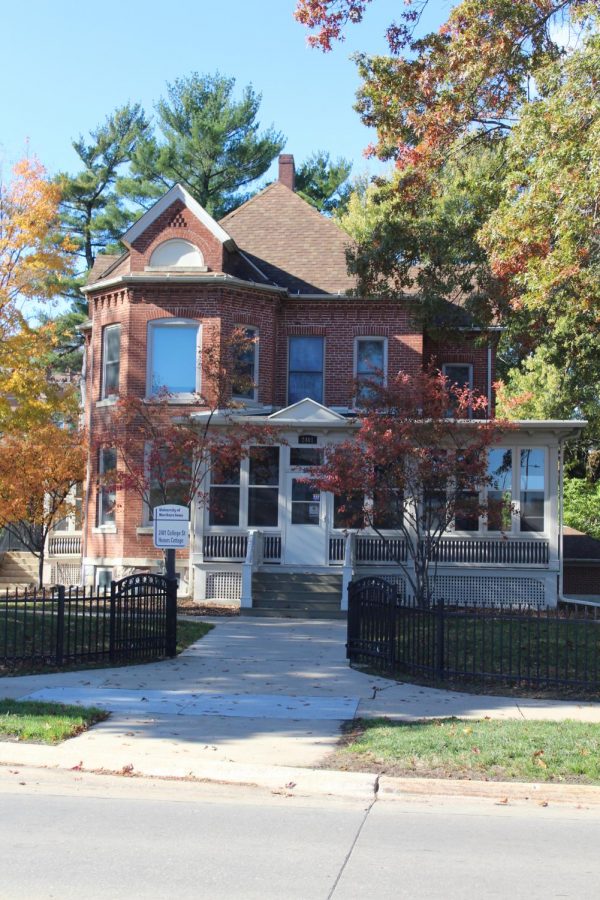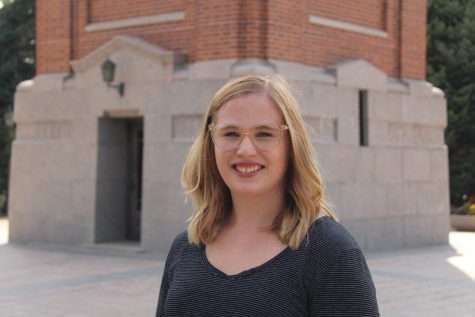The Honors Cottage and our sense of place
The Board of Regents decided to not demolish the Honors Cottage (above) and Alumni House.
Nov 11, 2021
The Regents deserve credit for giving the community a chance to consider any decision to demolish the oldest building on UNI’s campus. The former president’s house, now the Honors Cottage, is a familiar landmark along College Street. Passersby admire its beautiful brickwork and architectural charm. Its rich history should be better known. The home is our closest link to the school’s founding. It was built in 1890, 14 years after classes began, and is now the only
building left on campus from the 1800s. Its first inhabitant was Homer Seerley, the most important figure in UNI’s history, who lived in the house as president and after he retired. He died there and his services were held in the front parlor (as was the practice before funeral homes). Professor William Lang wrote the university’s history while living there. The house has also served as the college hospital. Fifty years ago this year, it became the university’s first center for multicultural students, welcoming them for more than three decades. It is the most significant landmark in the history of diversity on campus, the place where the university began its sustained commitment to supporting diverse students. Since 2004, it’s housed the Honors program.
There is a special role that an old home can play on a campus filled with cold institutional buildings. It can offer a space for forming community among special groups of students. Over the years, the Cottage has been a refuge for ailing undergraduates and more recently for students of color. Honors students now bond in its cozy rooms. It has always found a purpose. Today it is critical to the university’s sense of place. The house has found its way into the hearts of students, alumni, and neighbors for generations, since the Seerleys started entertaining students within its walls 130 years ago. To paraphrase Daniel Webster, it is a small cottage, and yet there are those who love it.
The historical significance of this landmark to UNI more than justifies its preservation, as does its place in the community’s past. To begin, it can be maintained while the campus and community undertake an inclusive discussion about its future. A decade ago, that kind of brainstorming led to local benefactors stepping up to preserve the city’s old Post Office (now Bike Tech) when it was threatened with demolition. This campus landmark deserves the same chance. For a start, the Cottage could continue to house the Honors Program, which currently utilizes all its rooms. Its first floor is accessible by ramp, while the second only contains a few offices. With some creativity, it could welcome and provide orientation for alumni and visitors entering campus from town. Interpretation introducing UNI’s history would be a wonderful addition on the eve of UNI’s sesquicentennial. It could allow visitors and students alike to appreciate our historical front campus, from the original buildings lost a half century ago to those that have survived and been added as the college grew into a major university.
Thanks to the Regents for providing a window for these voices to be heard and give the campus a chance to imagine a more appropriate future for this cottage than a wrecking ball. The university has a strong record on preservation and recent losses have not raised any outcry. Yet its oldest building deserves a hearing and the community needs a chance to explore its preservation. It stands today as an architectural gem that embodies the university’s founding, multicultural history, and sense of community in its bricks. Let’s find a way for it to tell that story.
Thomas Connors has served on Cedar Falls’ Historic Preservation Commission and as president of its Historical Society’s Board. He is an associate professor of History at UNI, although the views expressed in this column are his alone and do not represent the University.










Kevin Boatright • Nov 12, 2021 at 11:46 am
An excellent and thoughtful commentary on this complicated subject. The two houses need major financial investment if they are to be saved, renovated and fully utilized, and Northern Iowa has very limited funds for that purpose. Even so, they don’t seem to be impeding upon the general priorities expressed in the 2017 Campus Master Plan, which notes “Campus gateways, edges and streetscapes function as the first impression of campus to students, visitors and members of the larger community. They convey a message about the institution and are vital part of the critical first impression that is formed and influences a prospective student’s choice.” The Plan also states as a principle that “Buildings with important history and of significant architectural character should be preserved,” as well as the need to “Address aging facilities whose current use is not consistent with the use patterns of the existing modern-day campus.” The two houses are at the gateway to the historic campus core and what remains of the adjacent College Hill neighborhood. I hope a way can be found for the university and the community – together – to retain these structures in a productive way that also connects the past to the present and the future. However, nostalgia alone won’t pay for such a project and everyone needs to recognize that reality.
Carol Lantow • Nov 16, 2021 at 12:06 am
The reality is that if there is a will, there is a way. Demolition of this property would be a travesty. “Important history” and “significant architectural character” take precedence here!